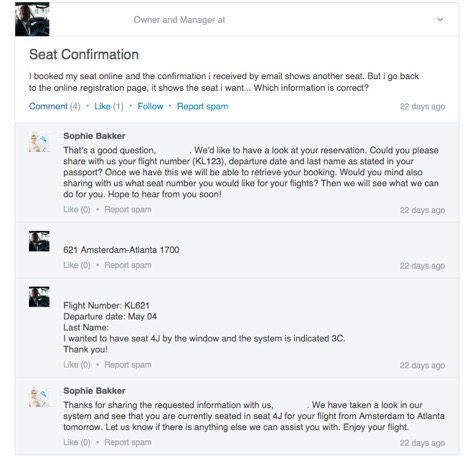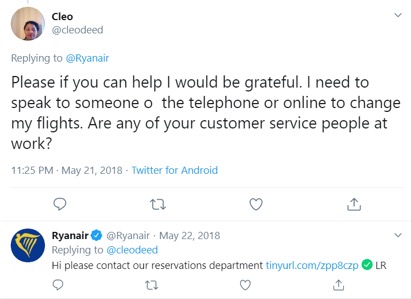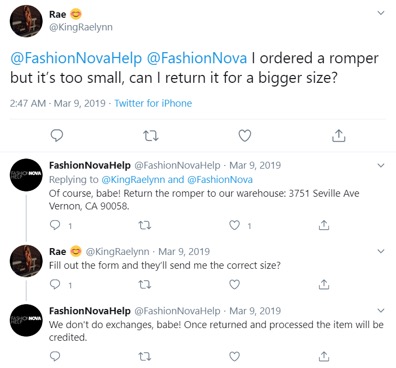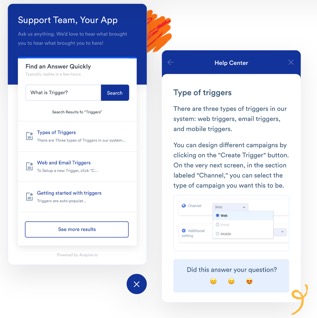All about social media customer service
New research indicates that 67% of users reported that they had contacted a company for support via social media. It is becoming clear that the role of social media in customer service is growing as people spend more time on social platforms. This phenomenon is called social media customer service.
Social media customer service is the proactive approach of providing consumer support through social media channels to connect with customers where they are most likely to be found. Social media customer service takes advantage of the easy feedback mechanism of social media channels to realize the benefits of easy brand accessibility and engaging company-customer social interactions. The concept has grown so popular that, according to Forrester, almost 80% of customers use social media to interact with brands.
Consumers are willing to pay 17% more to do business with brands that have great customer service reputations
With customer service expectations skyrocketing and users looking for seamless experiences that span the retail outlet to their social media timeline, the onus is on businesses to know how to listen and respond to their customers.
Answering a social media complaint can increase customer advocacy by as much as 25%, effectively improving a brand’s reputation. Moreover, it also helps businesses cut down on costs because resolving an issue on social media is 83% cheaper than call center interactions.
How can your company ensure outstanding social customer support? If you’re looking for a few fresh ways to provide superior customer support on your social media channels, this guide is for you. We’ll explore best practices on how brands can offer exceptional customer service via social media to build better relationships with consumers and consequently increase their consumer lifetime value.
5 tips to provide exceptional social media customer service
- Determine the right social media platform
- Enable real-time support
- Set social media support guidelines
- Monitor your brand mentions (and common misspellings)
- Use a knowledge base
1. Determine the right social media platform
Before diving into strategy ideas, it’s essential that you select the right social media platform to best serve your customers. Don’t make the mistake of having a presence on all the social media channels there are or take someone else’s advice on the best platform to provide customer service.
The best platform for your business is simply where most of your customers are present. By being present where your customers are, you can provide a support experience that is endemic to their preferred channel. If you don’t know where your customers go, you can begin by asking your customers themselves. With the help of tools like Google Forms or Typeform, you can create one-question surveys and send them to your customers via email. This simple survey can answer the question as to which social media platforms your customers tend to use.
Take the example of KLM Airlines. They knew that most of their customers were on LinkedIn, so they came up with an initiative for their LinkedIn users that would offer round-the-clock support to them.
Because of this, the airline company’s customers, which were already on LinkedIn, could easily get their issues resolved instead of having to call customer support or even worse, email them. Win-win for everyone.
2. Enable real-time support
For all customers, time is of the essence. Several studies have revealed that most consumers expect instant response over social media. Almost 60% of respondents from a survey claimed that they expected a response on social media within an hour. Another study reported that 17% of customers expect a response within minutes.
These are tough asks for any company. The challenge turns particularly daunting when support queries aren’t tended-to in time, and they languish overnight, effectively turning response times from a few minutes to a day later.
As a swift solution to such quandaries, try to respond with immediacy by leveraging a live chat software. A live chat solution can allow your customers to start a chat with your support team from your social media channels with the help of a direct link. When this link is clicked, it will open a chat window that the customers can use to directly reach your customer service team.
A good example of this is Ryanair. They use the same method as part of their social media support strategy to connect customers with their reservations department when they want to make changes to their reservations.
3. Set social media support guidelines
Social media customer support has distinct challenges as a function of having many different kinds of customers. To maintain brand consistency, it’s important to set concrete social media guidelines in place that help you project the same brand image while still staying faithful to your diverse customer base. These support guidelines should align with your company values.
Before you go about the job, here are a few questions you can ask yourself to facilitate the process:
- What is your tone of voice?
- What is your ideal response time for each channel?
- What are the FAQs that you are going to include?
- What is your protocol for miscellaneous customer issues and escalations?
- Will you respond to positive feedback? How?
You can also be proactive and create templates with answers to frequent queries before tweaking them to ensure that the tone of voice is consistent.
For example, Fashion Nova uses a casual tone of voice on its customer support channel. It is consistent with the company’s brand image and aligned with its marketing style.
4. Monitor your brand mentions (and common misspellings)
You would be wrong to assume that your customers know the spelling of the respective handles of your social media channels. This can lead to a lot of reviews and customer care issues going unresolved because of the simple fact that they aren’t addressed to you (or your spelling).
This is a golden opportunity for you to promptly provide effective customer service. Replying to a misprint of your brand’s mention will cement you as a forward-thinking brand in the minds of your customers. You can begin by monitoring connections and including misprints to help facilitate the process. Tools like Tweetdeck or Reputation X Alerts can help you organize every brand mention across social media channels and populate them in an possibly navigable dashboard that you can use to resolve problems one by one.
5. Use a knowledge base
A knowledge base has a myriad of benefits when it comes to customer service. It can help businesses resolve support tickets sooner, cut down on resolution turnaround time, and deliver solid customer service.
This is largely in part due to customers wanting to use knowledge bases to help themselves first. In fact, 91% of respondents from a survey claimed that they would use a knowledge base if it was tailored to their needs.
A knowledge base’s benefits don’t just end here. You can use it to deliver comprehensive support over social channels as well. By the simple act of providing links to your knowledge base in the comments section, you can save a ton of time for both yourself and the customer, while also making life easier for both of you. You can cut down on unnecessary back-and-forth over social media and instead provide users with easy-to-follow steps built to help them in the first place.
Conclusion
Did you know that consumers are willing to pay 17% more to do business with brands that have great customer service reputations?
Social media platforms have become one of the most exciting and popular avenues for providing customer care, building your brand and improving your reputation. To really “wow” people on social media, you need to deliver great support on the platforms your customers frequent so that you can build better relationships with them and convert them into loyal customers.
Social media customer service FAQs
How can a brand provide exceptional customer service on social media?
Determine the right social media platform for your business. Enable real-time support. Set social media support guidelines. Monitor your brand mentions (and common misspellings). Use a knowledge base.
Does my brand need to be active on all social media platforms?
No. Before launching a social media presence, research where your target customers already spend their time. Choose a few of the most popular social media channels and focus your efforts there.
How often should I check comments and messages on social media?
Since most consumers expect instant responses on social media, it is important to maintain a watchful eye over your profiles. If you have a small team this may be difficult to do, so it can be helpful to use live chat software to answer some of your more common questions.
How do I monitor my brand mentions on social media?
Tools like Tweetdeck or Google Alerts can help you organize every brand mention across social media channels and populate them in an easily navigable dashboard that you can use to resolve issues one by one.
Tags: Social Media Marketing.





